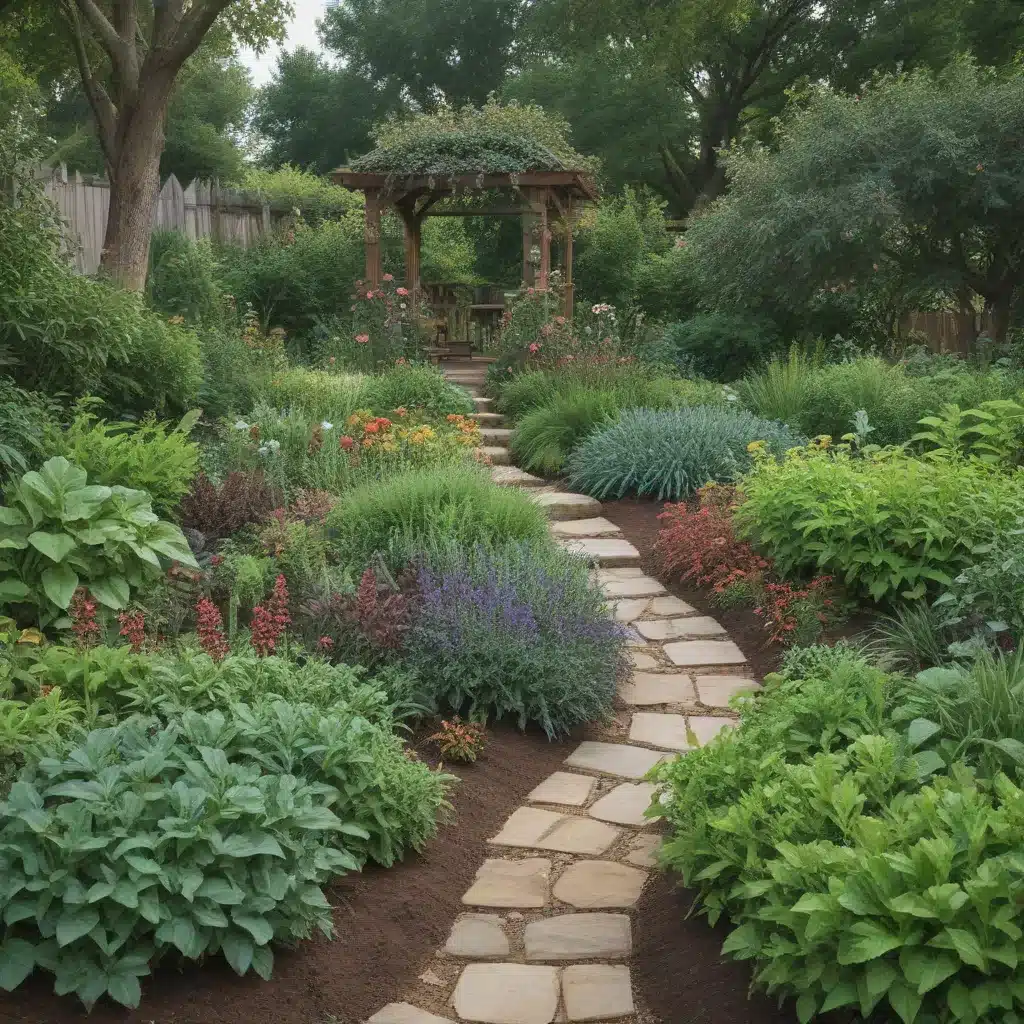
Cultivating Culinary Oases: The Joy of Edible Landscaping
As I strolled through the lush grounds of the Cornell Botanic Gardens in Ithaca, New York, I was struck by the sight of an enchanting edible landscape. Bursts of vibrant greens, reds, and purples danced across the beds, creating a veritable feast for the senses. This scene ignited a spark within me, one that had been kindled long ago by my dear old dad and the wisdom of authors like Michael Pollan.
You see, my dad has been an avid gardener for as long as I can remember. When I told him I wanted to study plant science, he eagerly handed me a copy of Pollan’s “Second Nature: A Gardener’s Education.” At the time, like most teenagers, I found anything from my parents to be hopelessly uncool. But I quickly became captivated by Pollan’s lyrical musings on the garden as a metaphor for our relationship with nature.
Fast forward to my environmental ethics class, where we spent nearly half a semester delving into the very same book. Our professor used it not as a love letter to gardening, but as a lens through which to question our role as caretakers of the natural world. How does food play into this complex dynamic? This is where the concept of agroecology – the practice of farming and food production using ecological principles – truly piqued my interest.
Edible Landscaping: Blending Beauty and Bounty
As I learned more about the power of edible landscaping, or “foodscaping,” I became increasingly convinced that this was the way forward. The idea of transforming the humble yard into a bountiful and beautiful oasis, where ornamentals and edibles coexist in harmonious splendor, just spoke to me on a primal level.
It was Rosalind Creasy’s groundbreaking book, “Edible Landscaping,” that truly ignited the movement in the early 1980s. Creasy’s radical notion that edible plants could replace traditional ornamentals without sacrificing aesthetic appeal was a revelation. Her thoughtful guidance on how to carefully choose and arrange these productive beauties has made her a veritable treasure in the gardening world.
Of course, the path to creating a lush, edible landscape is not without its challenges. As I discovered with my first foray into this realm, the horticultural needs of food crops can often clash with the desired visual impact. Lettuces that fry in the summer heat, carrots with stubbornly short roots, and unruly garlic and chives – my well-intentioned efforts quickly descended into chaos.
But I refuse to be deterred! The allure of a front yard bursting with squash, towering sunflowers, and vibrant peppers is just too strong to ignore. And as I’ve learned, with the right planning, dedication, and a bit of trial and error, the edible landscape can indeed be both bountiful and beautiful.
Embracing the Edible Oasis
Today, the concept of “foodscaping” has evolved to encompass not just the home garden, but urban and suburban land-use policies, as well as the incorporation of small-scale poultry production. The movement has gained momentum in the wake of the 2007-2008 financial crisis, as a new generation began questioning the reliability and environmental impact of our industrial food system.
So, whether you’re drawn to the idea of a lush, productive parking strip, a balcony bursting with containerized edibles, or a full-blown front yard transformation, the possibilities are endless. And let’s not forget the humble herb garden – a perfect gateway to the world of edible landscaping.
As for me, I’ve got big plans for my own little patch of earth. With a nod to the timeless wisdom of Rosalind Creasy, I’m ready to create a veritable culinary oasis, right here in Temecula. Imagine a dance of colors, textures, and flavors, where zucchini vines mingle with vibrant kale, and heirloom tomatoes cascade from trellises like ruby-hued jewels.
Of course, I’ll be sure to keep you, dear reader, posted on my progress. After all, what’s the point of cultivating such a bountiful and beautiful landscape if I can’t share the joy with the world? So, let’s get our hands dirty and create something truly spectacular – a Yard Goal for the ages.
Tying It All Together: Embracing the Edible Landscape
As I reflect on my journey into the world of edible landscaping, I can’t help but be struck by the profound ways in which it intersects with our relationship to the natural world. The garden, as Pollan so eloquently put it, is a microcosm of the human condition – a place where we grapple with questions of control, cultivation, and our role as stewards of the environment.
And when we introduce the element of food production into this equation, the stakes only seem to grow higher. Suddenly, the garden becomes not just a space of beauty and respite, but a vital link in the larger tapestry of our food system. By embracing the edible landscape, we’re not just creating visual delights, but actively contributing to the resilience and security of our local food supply.
So, as you embark on your own Yard Goal journey, I encourage you to approach it with a sense of purpose and possibility. Yes, there will be challenges – the fickle whims of nature, the ongoing battle against pests and disease, the sheer hard work of it all. But in the end, the rewards are so much greater than a mere pretty picture.
Whether you’re starting with a humble herb garden or diving headfirst into a full-blown edible oasis, know that you are part of a movement that is reshaping the way we think about our relationship to the land. And who knows – maybe, just maybe, your thriving edible landscape will inspire your neighbors to follow suit, creating a veritable patchwork of culinary delights across your community.
So, let’s get to work, shall we? A1 Landscape Construction is here to help you turn your Yard Goal into a reality. Together, we’ll cultivate a bountiful and beautiful edible landscape that nourishes both body and soul.



